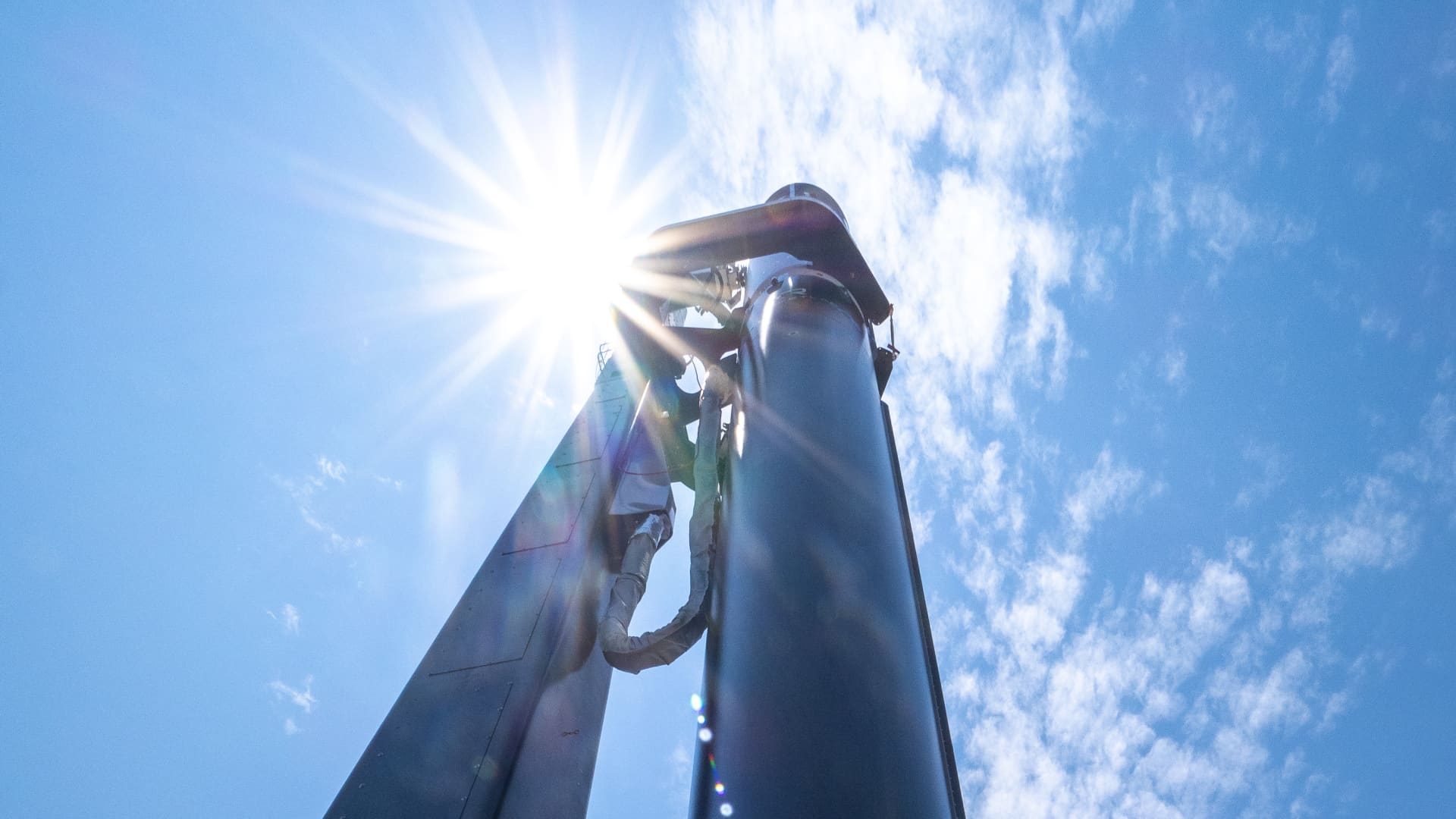Rocket Lab on Tuesday reported second-quarter results that largely met Wall Street’s expectations, and the company said it added contracts for 10 more launches in 2023 and 2024.
“The second quarter saw strong performance across Rocket Lab’s launch and space systems businesses with three successful Electron [rocket] launches, more than 17 spacecraft featuring Rocket Lab satellite components deployed to orbit, and multiple new launch contracts signed with new and returning customers,” Rocket Lab founder and CEO Peter Beck said in a statement.
The company reported a net loss of $45.9 million, or 10 cents per share, compared with a loss of 9 cents a share expected, according to analysts surveyed by Refinitiv. That was wider than the loss of 8 cents a share in the same quarter a year earlier.
Revenue grew 12% year over year in the second quarter to $62 million, versus $61.8 million expected by analysts surveyed by Refinitiv.
Rocket Lab’s launch business saw $22.5 million in revenue in the second quarter, while its space systems unit brought in $39.6 million. Its contract backlog increased from the previous quarter, rising by $40.1 million to $534.3 million.
On the company’s call with investors, Rocket Lab CFO Adam Spice said the space systems business had “a bit of a timing issue with … [recognizing] revenue over certain programs on the satellite manufacturer side.”
“We expect to make up a lot of that ground in the fourth quarter,” Spice said.
Rocket Lab stock rose about 3% in after-hours trading from its close at $6.66 a share. The stock is the top performing pure-play space stock in 2023, up 77% year-to-date.
For the third quarter, Rocket Lab expects revenue to grow to between $73 million and $77 million.
The company said it passed “significant milestones” in the development of its coming Neutron rocket. Those developments included completing a second stage tank for the rocket, as well as finishing construction of a stand to conduct cryogenic tank tests – key for verifying the rocket’s design ahead of a first launch. Rocket Lab also expects to begin construction of Neutron’s launch site in Virginia in the third quarter.
Beck told CNBC after the report that recent changes to Neutron’s design came partially from customers pushing to use more of the rocket’s capability on each launch.
“We’ve seen customers push for fewer and fewer launches, even if the economics are the same, and do downrange landings and use the full ‘throw’ of the vehicle,” Beck said. “The fastest route to getting the vehicle fully commercial is in fact to land it downrange on a barge.”
A key part of Rocket Lab’s progress toward the first Neutron launch is the development of its Archimedes line of rocket engines. Beck told CNBC that Archimedes features “new manufacturing technologies” that Rocket Lab “hasn’t really disclosed in any great detail.” They “enable a much lower cost per engine” and “are coming along nicely,” he said.
“We’ll be pulling it all together here for the end of the year for a big engine test,” Beck said.
Rocket Lab added orders for 10 launches of its Electron rocket since the end of the first quarter. Commercial satellite companies BlackSky and Synspective booked five and two Electron launches, respectively, while “a government customer” purchased two launches and “a confidential customer” ordered a “HASTE” mission. The launches are largely expected to happen in 2024.
HASTE is a modified Electron rocket that flies hypersonic test missions, rather than carry satellites to orbit. The company launched its inaugural HASTE mission in June, flying for its customer Dynetics’ Leidos under a contract from the Pentagon.
Rocket Lab has “multiple relationships with multiple customers” for HASTE missions, Beck said, but the classified nature of the launches makes it “difficult to give too much insight.” He added that “we see a healthy pipeline of these kinds of missions.”
“We have a longstanding relationship with some of these customers. They know who we are, they know the quality of the work they get from us,” Beck said, adding that “the U.S. has lagged thoroughly behind in hypersonics for a long time and this capability is incredibly affordable.”
